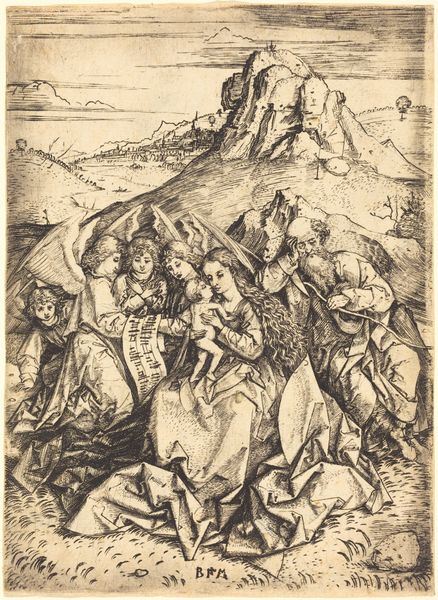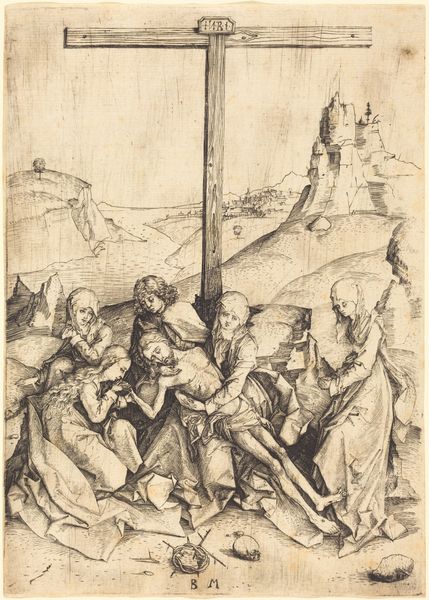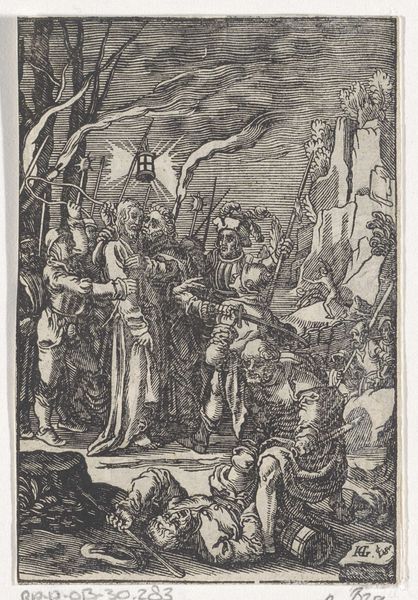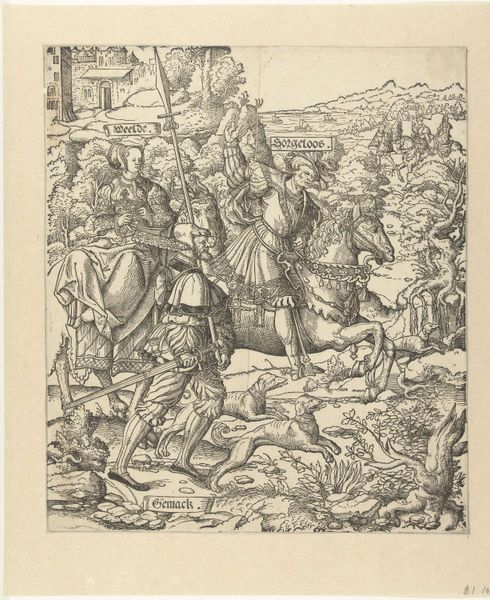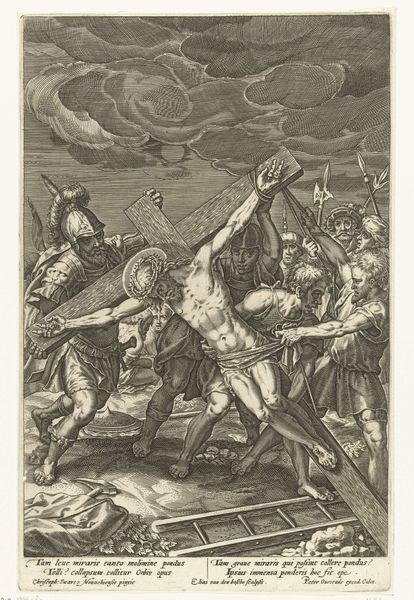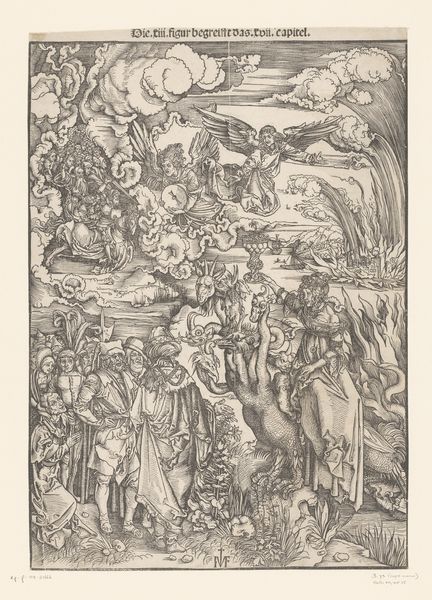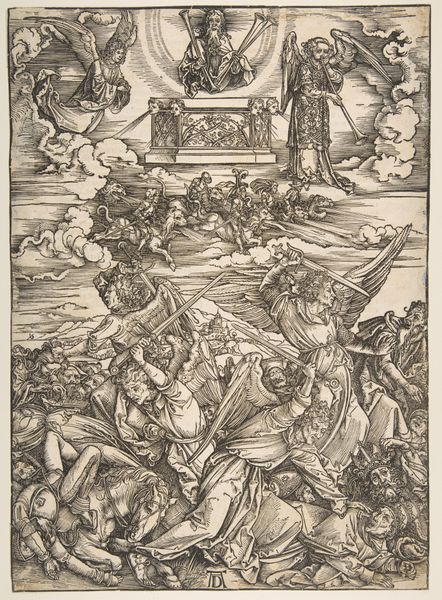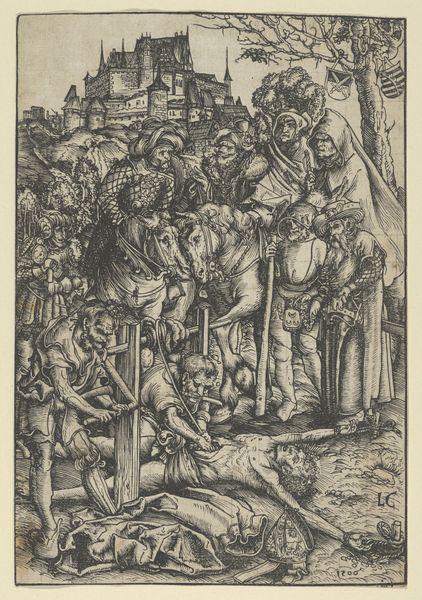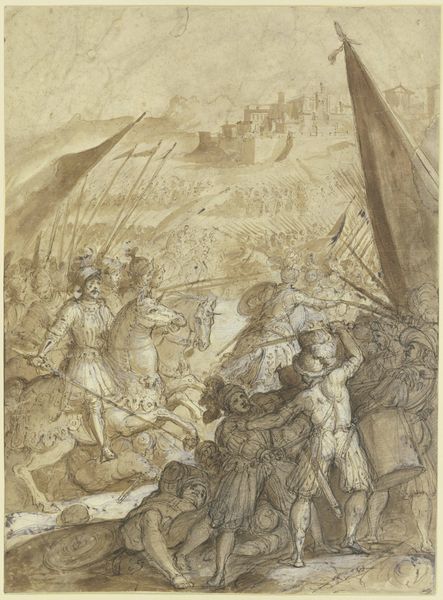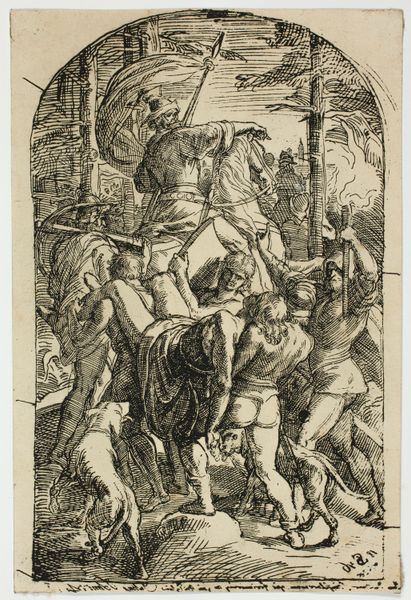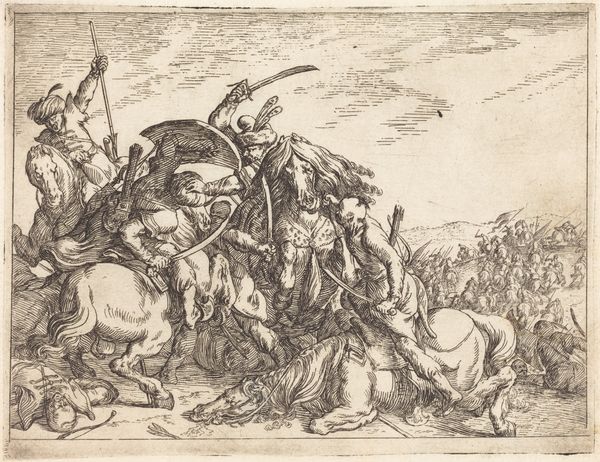
Fotoreproductie van een gravure door de monogrammist BM, 'Rust op de vlucht naar Egypte' 1854
0:00
0:00
print, engraving
# print
#
figuration
#
line
#
history-painting
#
engraving
Dimensions: height 215 mm, width 164 mm
Copyright: Rijks Museum: Open Domain
Curator: So, here we have a phot reproduction from 1854 of an engraving titled 'Rest on the Flight into Egypt' by the monogrammist BM. Editor: It's interesting how this image, focused on a biblical scene, is rendered in print. There is an interesting emphasis on line and detail; it's intricate and dense, almost claustrophobic despite the landscape. How would you interpret this piece? Curator: What's fascinating here is the reproduction itself. It's a material trace of the original engraving process. Consider the engraver, the labor involved in carving those lines, and the printing process allowing for wider distribution and, now, photographic reproduction. The act of recreating the engraving introduces another layer of human involvement and labor. How does the photographic re-printing affect our understanding of the image as commodity? Editor: I see what you mean. The printmaking is also an act of mediation. We're not viewing the ‘original’ artistic touch but a mediated output intended for consumption. The question of originality here seems important. It asks us about value creation - at which stage in the chain of production is that established and by who? Curator: Exactly! The choice to reproduce a devotional scene connects art with religious institutions but it equally underscores how that imagery circulates in culture and shapes perceptions via production and dissemination. Even the type of ink, the paper, and its likely audience speaks to those intentions. Also, notice the almost frantic activity that comes across in what the print shows - even a "rest" involved movement. Editor: It's quite fascinating to consider those networks through this single image. I hadn't initially considered the social implications embedded in the materials and the reproductive process itself. Thank you for helping me reconsider its contexts.
Comments
No comments
Be the first to comment and join the conversation on the ultimate creative platform.
